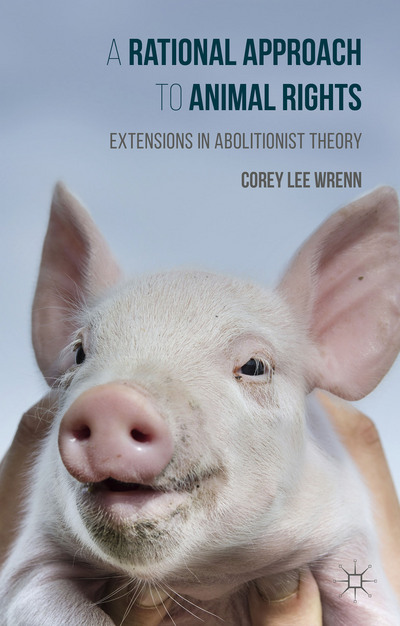A supportive network is one of the most important factors for sustaining veganism (Cherry 2006). Unfortunately, some individuals find themselves at odds with their non-vegan families. There are a number of reasons why this happens. For instance, most people do not recognize (consciously or not) that Nonhuman Animals categorized as food have the capacity to suffer (Bratanova, Loughnan, and Bastian 2011). Vegans may also be alienated from their families as they are often perceived by non-vegans as “thinking they’re better than everyone else.” This chastising of morally-motivated individuals is something social psychologists have termed do-gooder derogation (Minson and Monin 2011).
Yet, this research also indicates that individuals who feel threatened by veganism will be more open if they are given the opportunity to combat the perceived moral threat. The isolated vegan might therefore benefit from discussing their veganism with family members, even if that discussion becomes uncomfortable.
Unfamiliarity with new foods may also be a barrier to eating vegan with family members. A 2013 study found that non-vegans who were repeatedly exposed to vegan alternatives to “meat” began to view them more favorably. However, participants also reported boredom with the same three products included in the study, indicating the importance of variety (Hoek et al. 2013). Indeed, the human brain is programmed to respond to novelty (Gallagher 2011). This could also be good news for veganism. The large variety of foods associated with vegan cuisine could easily pique the interest of family members. Perhaps even the provocativeness of Nonhuman Animal rights issues may appeal to their novelty-seeking minds.
Active involvement in preparing the food can also be advantageous. Most parents know that having their children help in meal preparation can combat picky eating. This works because effort increases liking. Known as the IKEA effect, the creation of something leads to pride and a positive association with that creation (Norton, Mochon, and Ariely 2011). Family members who are encouraged to prepare a vegan meal may find themselves more favorable to that dish if they have prepared it themselves.
Lastly, the presence of food itself can win people over. Research has demonstrated that individuals who are given snacks to munch on when presented with new information were more likely to be persuaded (Janis, Kaye, and Kirschner 1965). The positive associations we have with food seem to spill over onto the message. Sharing vegan food with family members will not only increase their familiarity with that food but will also create positive associations with veganism.
Just be sure that the food is tasty. As Nathan Winograd argues in All American Vegan, nobody is going to be won over by bland, flavorless, or overly healthy offerings. If non-vegan family members are not tempted to taste vegan food, they will not be able to build any familiarity or positive associations!
Summary
- Give family members a chance to express their discomfort with your moral choices; an open dialogue may reduce negative attitudes
- When possible, expose family members to vegan foods to increase familiarity and liking
- Try to include a variety of vegan foods to peak interest and avoid boredom
- Encourage family members to create vegan meals themselves, as preparation increases liking
- Provide delicious vegan food for family members when discussing veganism; snacks positively influence persuasion
- Opt for tastier foods over blander health-focused food when sharing with non-vegans
Further Reading
Adams, C. 2001. Living Among Meat Eaters: The Vegetarian’s Survival Handbook. Three Rivers Press.
Askew, C. 2011. Generation V: The Complete Guide to Going, Being, and Staying Vegan as a Teenager. Tofu Hound Press.
Torres, B. and J. Torres. 2009. Vegan Freak: Being Vegan in a Non-Vegan World, 2nd ed. Tofu Hound Press.
References
Bratanova, B., S. Loughnan, and B. Bastian. 2011. “The Effect of Categorization as Food on the Perceived Moral Standing of Animals.” Appetite 57: 193-196.
Cherry, E. 2006. “Veganism as a Cultural Movement: A Relational Approach.” Social Movement Studies 5 (2): 155-170.
Gallagher, W. 2011. New: Understanding Our Need for Novelty and Change. Penguin Press.
Hoek, A. et al. 2013. “Are Meat Substitutes Liked Better Over Time? A Repeated In-home Use Test with Meat Substitutes or Meat in Meals.” Food Quality and Preference 28 (1): 253-263.
Janis, I., D. Kaye, and P. Kirschner. 1965. “Facilitating Effects of Eating While Reading on Responsiveness to Persuasive Communications.” Journal of Personality and Social Psychology 1: 181-186.
Minson, J. and B. Monin. 2011. “Do-Gooder Derogation: Disparaging Morally-Motivated Minorities To Defuse Anticipated Reproach.” Social Psychological and Personality Science 3 (2): 200-207.
Norton, M., D. Mochon, and D. Ariely. 2011. “The ‘IKEA Effect’: When Labor Leads to Love.” Harvard Business School Marketing Unit Working Paper No. 11-091.
A version of this essay was originally published by VegFund on May 7, 2013.

Readers can learn more about the social psychology of veganism in my 2016 publication, A Rational Approach to Animal Rights.
Receive research updates straight to your inbox by subscribing to my newsletter.
